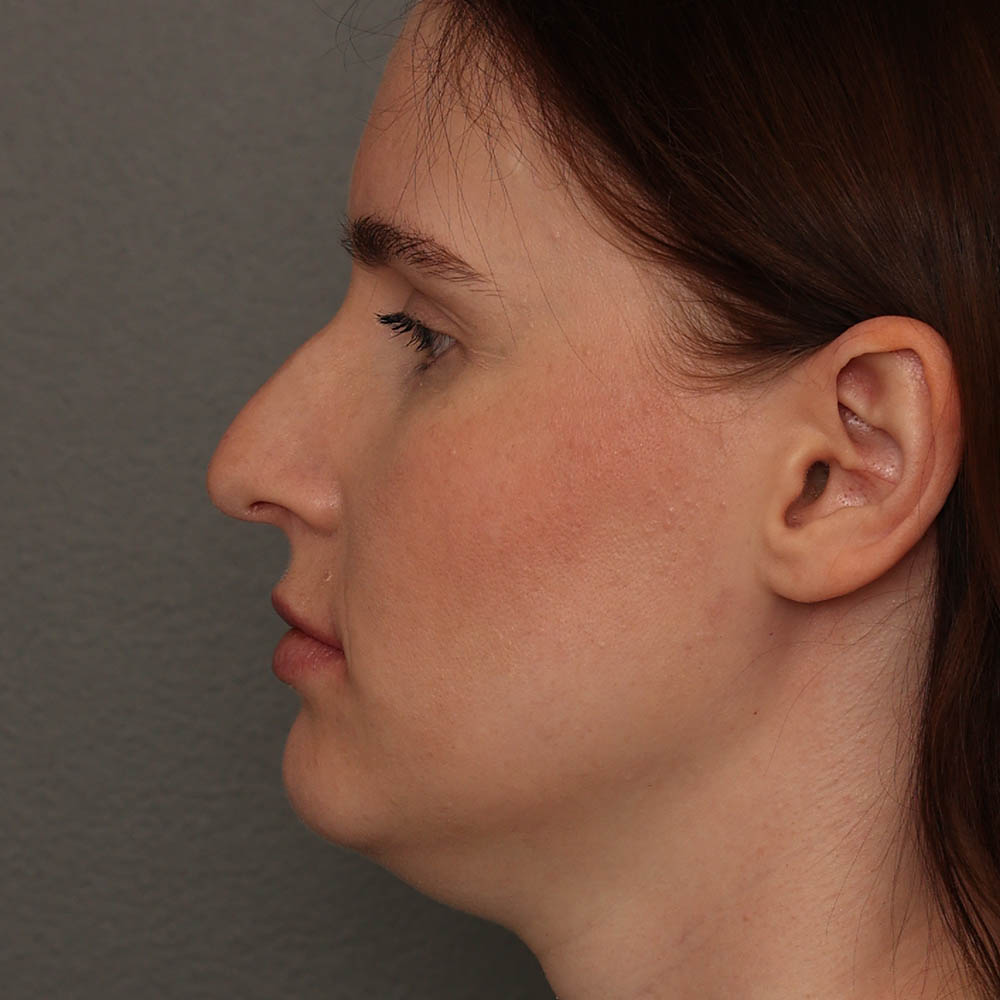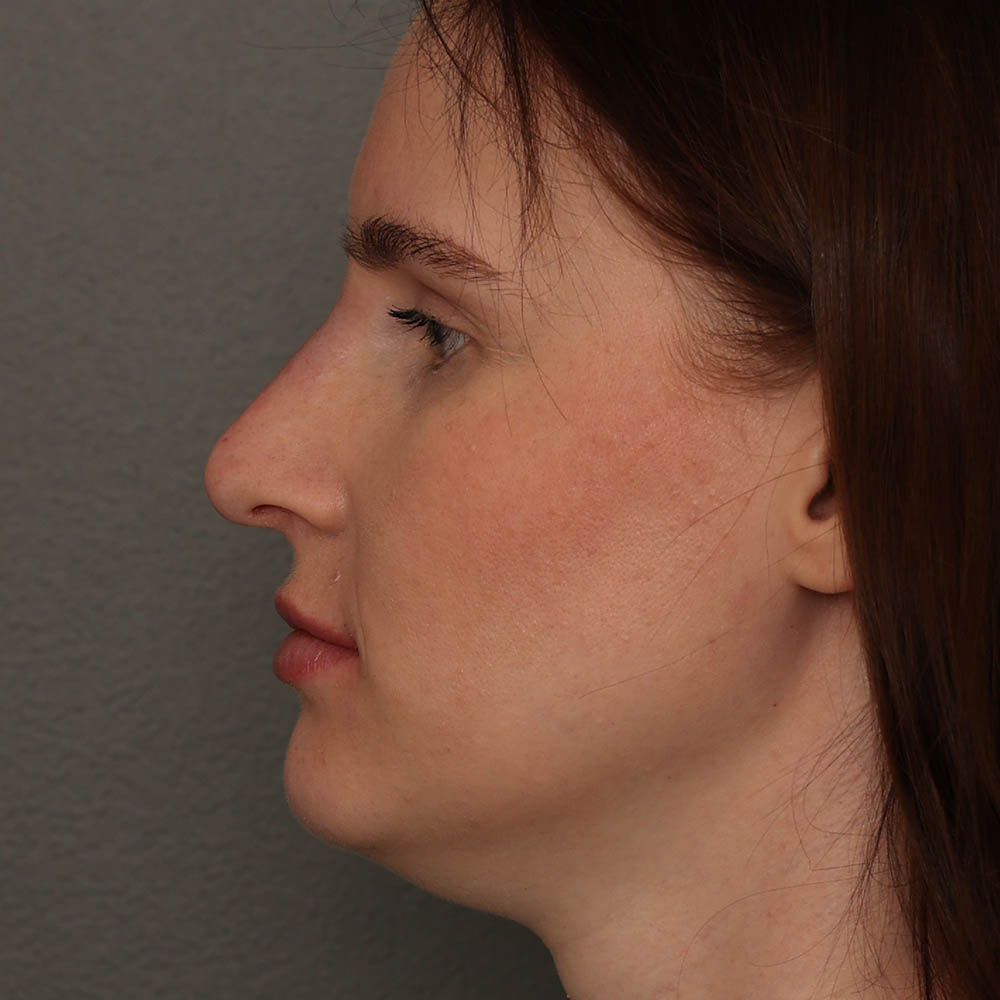FILLERS
Fillers come in many forms and are an invaluable tool in facial shaping for patients of any age. Typically one cubic centimeter of filler is injected in strategic amounts superficially in the skin to fill a wrinkle or more deeply to restore the youthful contours of the face. Lips, hollows around the upper and lower eyelids, forehead lines, and upper cheeks are all great areas for fillers. Fillers can also be used to carefully improve the appearance of the nose or jawline. I use fillers, typically fat, in all my facelift procedures. As we age, we lose fullness in certain parts of our body, and gain it in others. The neck and jowls get bigger, but almost everything else gets smaller. The key is to make sure it is not overdone. Like anything else there can be too much of a good thing. Fillers are nicely combined with botox and other facial rejuvenation procedures.


This 46 year old was treated with 40 units of neurotoxin and 2 syringes filler. Her natural beauty is enhanced after these procedures – not distorted. Neurotoxin and filler treatments require some maintenance for optimal results and are paired nicely with other skin care treatments. Our expert injector, Luann will guide you to the most cost-effective treatments. Her experience and skill ensure gentle, safe, and beautiful care.


This patient had injections to relax her facial muscles, to add lost volume around the eyes and mouth, and to modify the shape of her chin. A series of laser facials helped even the skin tone and made the skin more reflective.


Under eye filler can camouflage under eye bags when you’re not quite ready for surgical options.


Filler was strategically placed to straighten the bridge of the nose and improve nasal contour.
FILLER INFORMATION
Add Volume to Plump Lips, Smooth Lines, or Lift & Contour Cheeks. Collection of Fillers. Learn More about Aesthetic Treatment. Non-surgical Option. Talk to us Today.
There are various formulations of materials used for facial filling. Collagen was used in the not so distant past, but it was plagued by a short-lived effect, and allergic reactions. There are several very high-quality long-lasting fillers now on the market. Some are more economical or better suited than others for specific locations on the face. Some are semi-permanent, others are not. Fillers are not inexpensive, and their effects are not trivial. Complications can include lumps, skin discoloration, and even embolization and necrosis. I strongly urge patients to chose a board-certified plastic surgeon who specializes in aesthetic procedures to ensure that you are being cared for by someone who has made a commitment to the safety and quality of your result, not just the financial gain of this very popular aesthetic procedure.
You mean I don’t have to have surgery?! Sorry, the so-called “liquid facelift” is a marketing gimmick. No filler technique replaces the effect of a well-performed facelift. However, a facelift alone cannot restore an appearance of youth and health. These procedures play separate roles and DO NOT replace each other. If large amounts of filler are used across the entire face, a very nice rejuvenating effect can be seen. Alternatively, some of the most unnatural looking faces I have seen are due to the over-use of filler. I typically recommend fat injections when large amounts of filler are required for a safer, more long-lasting and more economical “liquid facelift.” However, as we are seeing, even fat can be overdone and specific technical details and awareness of the density and existence of the stem cells in the fat needs to be accounted for. Again, please trust this only to a very experienced, committed board-certifed plastic surgeon specializing in aesthetic surgery.
Fillers are used to create a more youthful look by replacing the volume lost during the aging process or to augment a thin face of any age. In many cases, loose skin and wrinkles are caused in large part by loss of fat which is an unavoidable problem of the aging face. Fillers are a very popular way to smooth lines and achieve a more youthful appearance without surgery. Most fillers can be applied in the office with very little to no recovery time necessary.
There are many new types of fillers on the market. Juvederm, Restylane, Perlane, Belotero, and Voluma are all made of hyaluronic acid, which is very safe and good to work with. They can be used to fill wrinkles and contours. Radiesse is a very long lasting and excellent filler, which works well in specific parts of the face and the back on hands. Sculptra can be excellent for plumping large portions of the face, which is something most thin patients over the age of 40 require. The ideal filler is, of course, long lasting without problems. Most fillers have a longevity anywhere from months to years depending on the location of injection.
Fat injections are perhaps the most long-lived filler we use. This procedure requires more recovery, however. This is due to the need for an additional procedure (liposuction) to harvest the fat, and a higher rate of swelling and inflammation afterwards. The reward is that fat injections contain stem cells which presumably are responsible for the incredible rejuvenating effect on the skin which we are seeing with fat injections as opposed to other fillers. This makes fat injections a very nice addition to other procedures performed in the operating room. Fat injections can also be performed in the office for small areas like lips. Because fat injections are essentially permanent, they act like fat in other parts of the body – which is to say, they can expand when you gain weight. Weight gain can result in an excessive appearance of the fat which is transplanted. I would like to underscore the complexity of this procedure. Before you undergo a fat injection procedure, you should ensure that your surgeon can explain all the possible risks.
